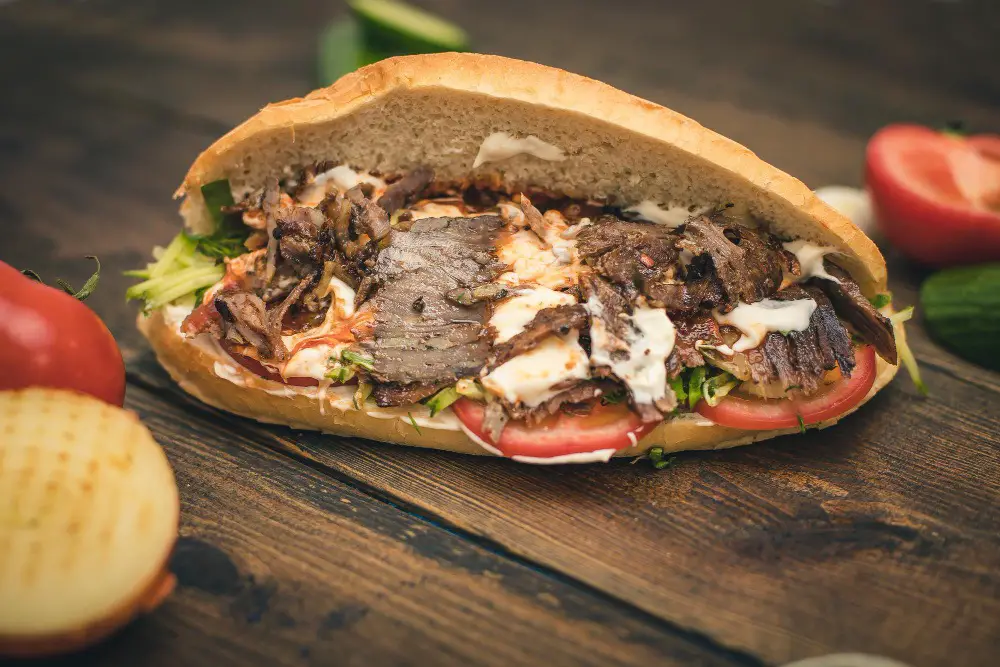Part 1: Introduction to Tenderizing Shaved Steak
The art of tenderizing shaved steak is a culinary tradition steeped in history. For generations, chefs and home cooks alike have sought the secret to transforming even the toughest cuts into succulent, melt-in-your-mouth delights. Especially when it comes to shaved steak, a thin and delicate slice, achieving that perfect tenderness is both a challenge and a necessity. This guide is dedicated to unraveling the techniques and methods that make tenderizing an essential step in steak preparation. As we delve deeper, you’ll discover insights from age-old practices to modern-day innovations, all aimed at ensuring every bite of your shaved steak is nothing short of perfection. Along the way, we’ll also explore related culinary treasures, such as the iconic Philly Cheesesteak and the secrets behind the Best Steak Marinade Recipe.
In the subsequent sections, we will delve into the intricacies of various methods available, ensuring that every bite of your shaved steak is a tender delight. From mechanical to chemical methods, from marinades to age-old tricks, this guide covers it all. So, let’s embark on this culinary journey together, exploring the art and science of tenderizing steak.
Part 2: Methods of Tenderizing Shaved Steak
1. Mechanical Tenderizing
Using a meat mallet is one of the most traditional and effective methods to tenderize steak. By physically pounding the meat, you break down tough muscle fibers, making the meat more tender and allowing it to cook evenly.
- Benefits: It’s a quick method that doesn’t require any special ingredients or prolonged waiting times. It also enhances the meat’s ability to absorb marinades.
- Drawbacks: Overzealous tenderizing can make the meat too thin, compromising its texture and flavor.
2. Chemical Tenderizing
Chemical tenderizers work by breaking down meat fibers at a molecular level. One such method is using a baking soda solution. This alkaline solution weakens the meat’s surface proteins, ensuring a tender bite.
- How it works: The alkalinity of baking soda alters the meat’s natural pH level, which results in tenderization.
- Steps to follow: Mix a teaspoon of baking soda with a cup of water, immerse the steak for 15-20 minutes, then rinse thoroughly to remove any residual baking soda taste before cooking.
Another chemical method involves using salt. Salt draws out the meat’s moisture, which then gets reabsorbed, breaking down tough muscle fibers in the process.
- Process: Generously salt the steak and let it sit for about an hour. The salt will initially draw out the juices, but they’ll be reabsorbed, taking the salt’s tenderizing properties with them.
- Benefits: This method not only tenderizes but also seasons the meat, making even cheaper cuts taste like premium steaks.
3. Marinades for Tenderizing
Marinades serve a dual purpose: they infuse the meat with flavor and act as tenderizers. Homemade marinades, especially those designed for Philly cheesesteak, often contain acidic ingredients like vinegar, wine, or citrus juice. These ingredients help break down tough fibers in the meat, ensuring a tender result.
- Importance of acidic ingredients: Acids can denature protein, softening the meat’s texture and allowing it to absorb more marinade.
- Time duration for marinating: For optimal results, marinate the steak for at least 2 hours. However, avoid marinating for more than 24 hours as the meat can become too soft and lose its natural flavor.
4. Velveting Beef for Stir Fries
Velveting is a revered Chinese cooking technique that guarantees incredibly tender beef slices, perfect for stir-fries.
- What is velveting? It’s a process that involves marinating beef slices in a mixture of cornstarch, egg whites, and rice wine or sherry.
- Steps to achieve perfect velveted beef: After marinating, the beef is briefly blanched in hot oil or boiling water. This precooking step seals in the juices, ensuring that the beef remains tender during the rapid stir-frying process.
5. Other Tricks and Tips
When preparing steak, the way you cut it can make a world of difference. One crucial tip is the importance of cutting against the grain. This means slicing perpendicular to the muscle fibers, which effectively shortens them, making the meat easier to chew and more tender.
Another lesser-known method involves using baking soda for tenderizing. A brief soak in a baking soda solution can make a noticeable difference in the meat’s tenderness, especially for cuts that are typically tougher.
Part 3: FAQs
- Why is tenderizing steak important?
- Tenderizing improves the texture and flavor of the steak. It ensures that the meat is not only delicious but also easy to chew, enhancing the overall dining experience.
- How long should you marinate steak for optimal tenderness?
- While marinating for at least 2 hours is ideal, it’s crucial not to exceed 24 hours. Over-marinating can lead to a mushy texture.
- Can baking soda be used for all types of meat?
- Baking soda is most effective on beef. It’s best to avoid using it on delicate meats like fish or chicken as it can alter their texture unfavorably.
- What are the risks of over-tenderizing steak?
- Over-tenderizing can result in a mushy or overly soft texture, which detracts from the steak’s natural bite and flavor.
Part 4: Conclusion and Recommendations
In the culinary world, tenderizing shaved steak is both an art and a science. Whether you’re using a meat mallet, a baking soda solution, or a flavorful marinade, the ultimate goal remains consistent: to achieve a tender, flavorful steak that delights the palate. As you experiment with the methods mentioned above, you’ll discover the techniques that resonate with your culinary style. Remember, patience and practice are your allies in mastering the art of tenderization. For those looking to further enhance their beef dishes, exploring articles like Mastering Beef Cooking: Discover Different Ways to Cook Beef can provide additional insights. Happy cooking!

